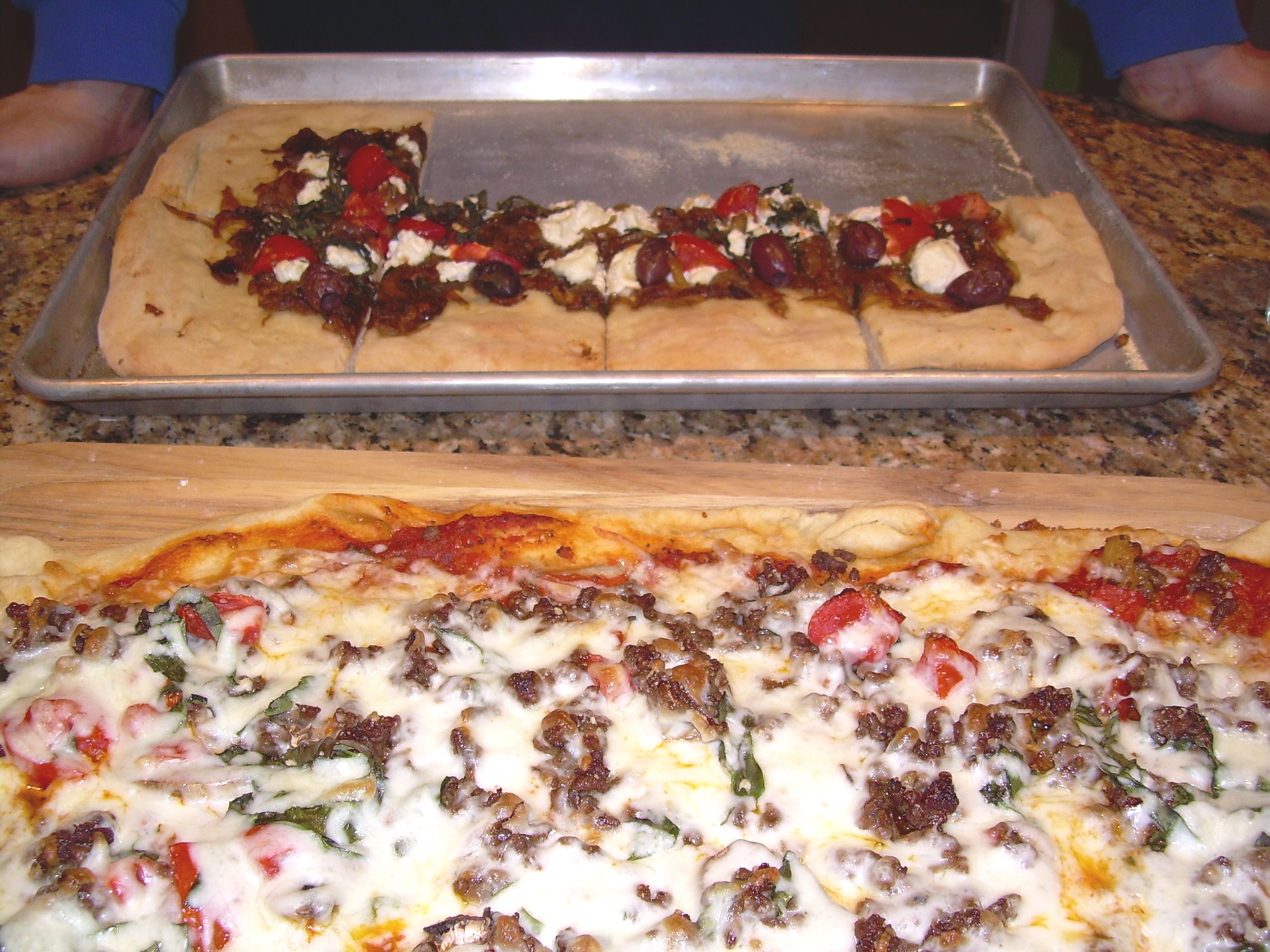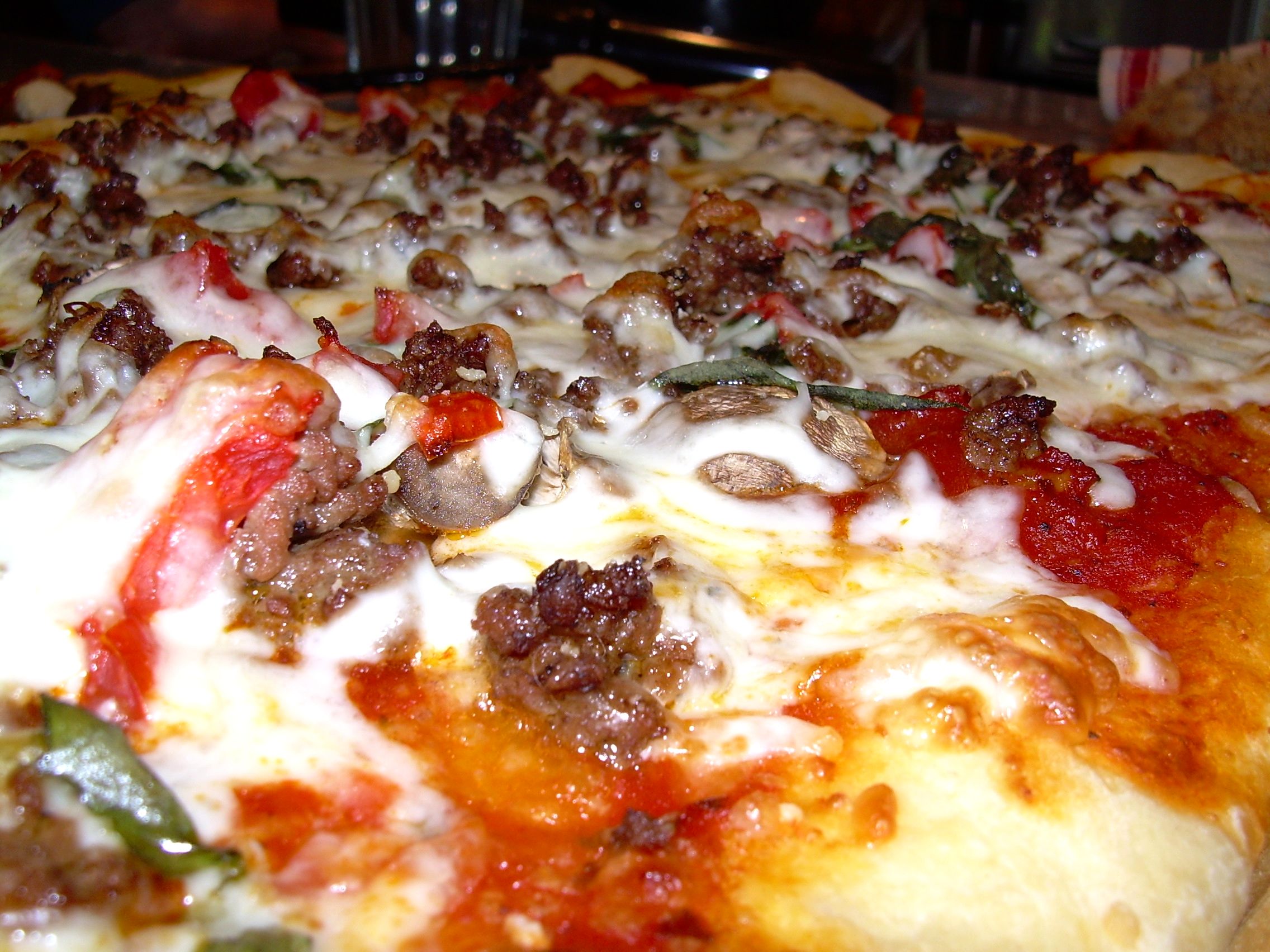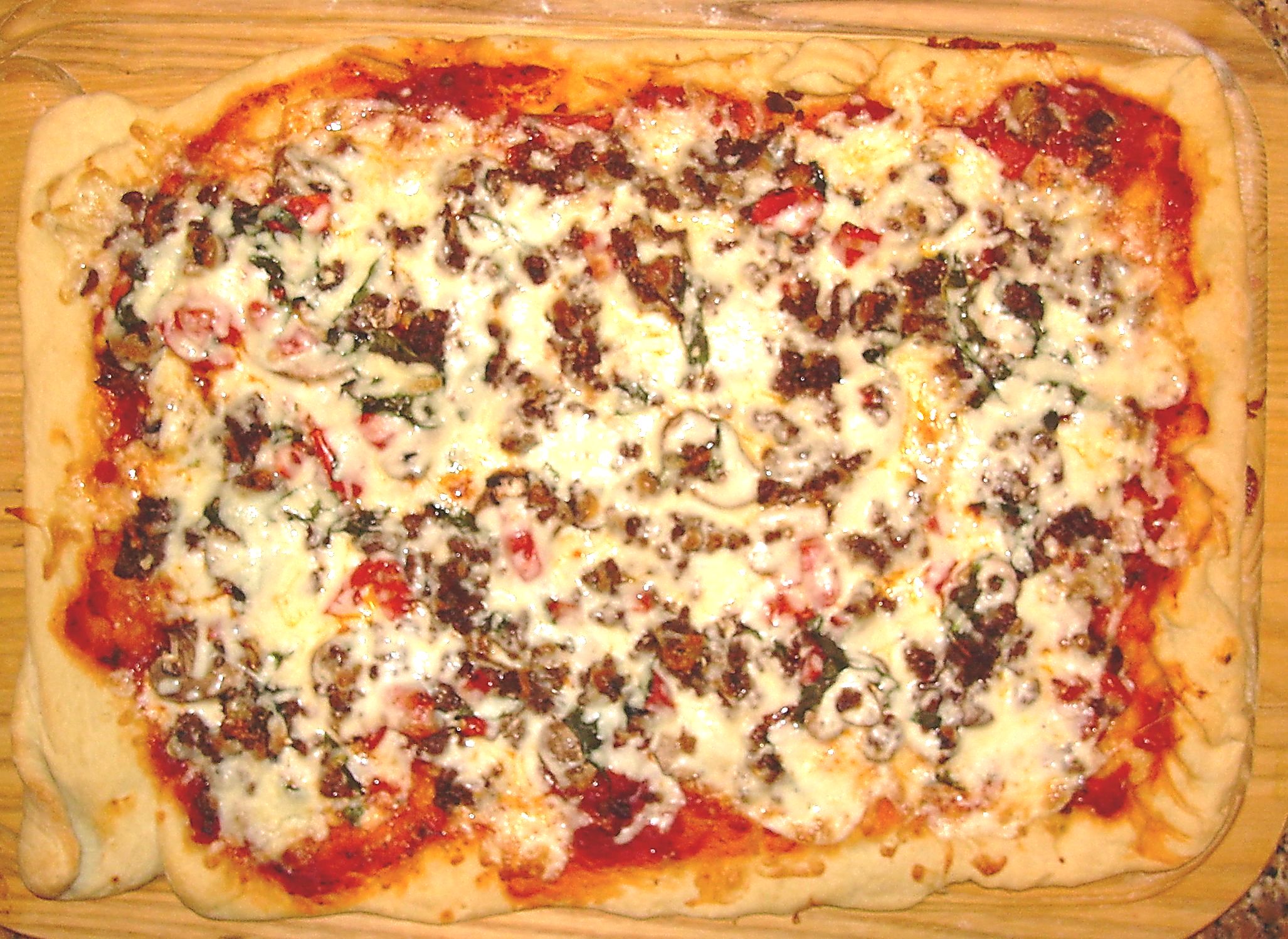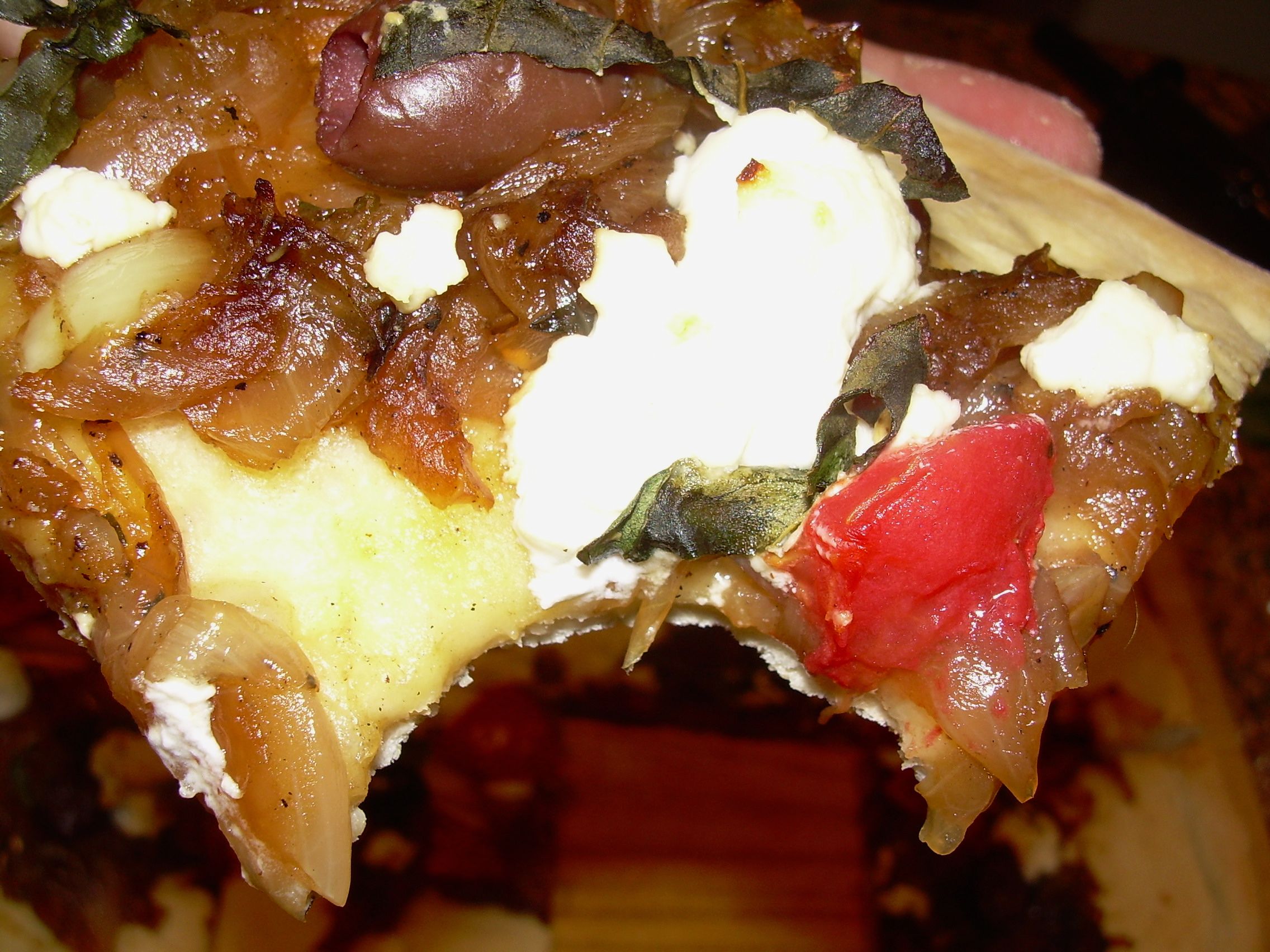Recently, I was experimenting with pizza doughs, trying to recreate the wonderful pizzas that my mother used to make. She made everything from scratch, including the pizza sauce that she canned from tomatoes that we grew. My father had an aversion to air conditioning, so canning time in the summer – in hot, humid Washington, D.C. – wasn’t a lot of fun. I remember her standing at the stove, soaked in sweat, with billowing clouds of steam rising from the canning pots. Ah, good times.
In the nineties, she started making her pizza dough in a food processor and she used a recipe out of Greg Patent’s book, Food Processor Cooking: Quick and Easy. I played around with that recipe and with the dough recipe for pissaladiere in Ina Garten’s book, Barefoot in Paris
. I liked Ina’s a bit more because of the honey, but it needed more salt. Now, when I say that, you have to understand that I didn’t follow her recipe for pissaladiere, which does contain a lot of salt (anchovies, olives, etc.). I think the original recipe would be great if you are using very salty toppings, but if you are not, you might want to increase the salt a bit, as I did.
I ended up making two different pizzas: one with caramelized onions, kalamata olives, goat cheese, and fresh basil, and the other with tomato sauce, mozzarella, and ground beef (for Master Chow). I really liked the goat cheese pizza, but Master Chow, a Pizza Hut pan pizza aficionado, thought that the beef pizza wasn’t greasy enough. Then it hit me: one of my mom’s “secrets” was the prodigious use of extra virgin olive oil. So, slather it on the pan and the dough when you make your pie – it will be worth it! Recipe after the jump . . .
goat cheese, and fresh basil, and the other with tomato sauce, mozzarella, and ground beef (for Master Chow). I really liked the goat cheese pizza, but Master Chow, a Pizza Hut pan pizza aficionado, thought that the beef pizza wasn’t greasy enough. Then it hit me: one of my mom’s “secrets” was the prodigious use of extra virgin olive oil. So, slather it on the pan and the dough when you make your pie – it will be worth it! Recipe after the jump . . .
Pizza Dough
Adapted from a recipe by Ina Garten in Barefoot in ParisFor the dough (makes 2 pizzas)
Toppings of your choice for the pizza
Combine the water, yeast, honey, and olive oil in the bowl of a food processor. (If the bowl is cold, start with warmer water so it’s at least 100 degrees F when you add the yeast.) Add 3 cups of the flour, then the salt, and pulse a few times. Pause and add 1 more cup of flour, or just enough to make a soft dough. Pulse a few more times – when the dough is ready, it will pull together suddenly into a ball.
When the dough is ready, turn it out onto a floured board and knead it by hand a dozen times. It should be smooth and elastic. Place the dough in a well-oiled bowl and turn it to cover lightly with oil. Cover the bowl with a damp kitchen towel. Allow to rest at room temperature for 30 minutes, or cover with plastic and place in the refrigerator for an overnight rise (this will improve the flavor.)
Preheat the oven to 450 degrees F.
Gently punch down the dough. Divide it into dough into 2 equal parts, rolling each 1 into a smooth ball. If you’re only making 1 pizza, place 1 ball on a baking sheet and cover it loosely with a damp towel. Allow the dough to rest for 10 minutes. (If you’re not using the other dough, wrap it well and refrigerate or freeze it for the next time.) Roll the dough lightly with a rolling pin, then stretch it to a 10 by 15-inch rectangle and place it on a baking sheet sprinkled with cornmeal.
Brush the dough generously with olive oil. Place the toppings onto the dough, leaving a 3/4-inch border all around. Bake for 15 minutes, or until the crust is crisp and the edges are golden. Serve hot on a cutting board.









Related Articles
2 users responded in this post
I hate to disagree with Mr. Chow, but the goat cheese pizza sounds amazing! Now I want pizza for dinner tonight… darnit 🙂
A good homemade pizza sounds so good right now!!